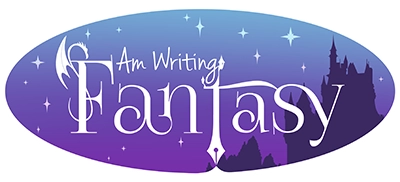One of the best things about reading fantasy is entering a new world that feels like it existed in all of its glorious complexities far before opening the book holding it.
And as a fantasy writer, worldbuilding is one of the most exciting and creative parts of the process. Creating a unique and believable culture is an essential part of world-building that can add depth and richness to your story.
In this post, we’ll explore how to create fantasy cultures and the key elements you need to consider.
After all, cultures are an essential part of the genre.
Would Game of Thrones be the same without the Ice Wall, the old gods, and lost cities across the sea…? Would Pern be the same without dragons and threads?
Here are seven steps to ensure a rich, authentic, and unique fantasy culture from page one of your novel.
What You'll Learn
1. Geography and Environment
At its core, worldbuilding contains an ecosystem and inhabitants.
In this way, the geography and environment of your fantasy world will play a significant role in shaping the culture of your fictional people.
In other words, we need an ecosystem.
The quickest way to do that, and create a world for your book, is to create a map.
This is good news as we have several ways to help you get started with making a map!
Check out our Map Making 101 post and we also recorded a whole video series on fantasy map making.
The first video in that series is below. These videos are of an older date, but the content is still highly relevant.
Once you’ve drawn a map complete with weather systems, mountain ranges, and oceans you’ve created the environment. Now you need to develop civilizations that adapt to it — or fail. Both work to give your world depth.
Pick a settlement if you’ve dotted your map with them. If not consider that most civilizations arise near water.
This is because water provides not just something to drink for people, livestock, and plants, but also transportation and power (milling). The oldest civilizations in your world will begin near water.
Now that you have a city, town, or village look at the ecosystem around it this leads directly into a set of worldbuilding questions:
- Will that ecosystem support a settlement by providing lumber, crops, or game? If not, can they import what they lack? Or will the people be nomadic?
- What type of tradesmen/craftsmen would be in this culture? Are they merchants and sailors or knights and peasants?
- What is the climate like? Are they living in a desert, a forest, or near the ocean? Forest, tundra, plain, or rocky islands?
- What is the food source for this settlement? Are people farming? Catching fish? Hunters?
- What types of flora and fauna exist in their environment?
- Do they have access to metals, wood, or other building materials?
All of these factors can influence everything from their clothing and architecture to their religious beliefs and social norms.
2. History and Mythology
Every culture has a unique history and mythology that defines its values and beliefs – even if variations exist. In fact, the older the culture, the more variations you will find.
So, a culture has a shared history, a shared religion, and shared customs stemming potentially from early adaptations by the original settlers needing to survive.
As a fantasy writer, you have the opportunity to create your own myths, legends, and lore that will add depth to your world. These are experiences of people transmitted through time.
And that is why creating cultures is powerful for worldbuilding. You are developing a history with a sense of place that defines a group all in one sitting.
- Consider the creation myth of your world and how it influences the beliefs of your fictional people. Do they worship gods or spirits?
- Are there any legendary heroes or villains?
- What stories do they tell about their own history and how do those stories shape their worldview?
- History also ties back to the first question: Will the ecosystem support a settlement? Has the community grown so large that resources are scarce and the city is hungry enough for more they would go to war? Or is it slowly starving as merchants and the wealthy look for greener shores?
Not every town and village in your world should be at its peak of prosperity.
3. Language and Naming Conventions
Language is a fundamental part of any culture, and your fantasy cultures should have their own unique language and naming conventions.
Consider how your people communicate and what types of words and phrases are important to their culture.
You can create unique words and phrases that reflect their cultural background, and give your characters names that reflect their cultural identity.
If you need help, we have a short self-paced online course available for you. Or if you prefer a low-cost subscription, giving access to several of our courses at once, this option is available too.
4. Social Structure and Customs
A culture can be defined as follows:
The behaviors and beliefs characteristic of a particular social or ethnic group. The sum total of ways of living built up by a group of human beings and transmitted from one generation to another.
However, social structures and customs can vary widely from culture to culture, and your fantasy cultures should be no exception.
Once again, here are some worldbuilding questions to help you out:
- How do people organize themselves and what types of roles and responsibilities are important to them?
- What type of government should exist here? This should be based on the timeframe and the needs of the story. Are there kings and queens, statesmen? Who has the ultimate authority to make the rules?
- Are they a hierarchical society, or do they value equality and cooperation?
- What types of ceremonies or rituals are important to them?
- Do they have any social taboos or customs that outsiders might not understand?
- Layer history into their culture by considering how the society developed. Were they constantly at war to protect fertile land from close neighbors or did huge mountains or deserts protect them from others, allowing more peaceful pursuits to develop like art and music?
- Are they always listening for a warning note? Do they teach children how to hide?
This is where you put yourself in the shoes of the character by understanding the social norms of your world.
It adds depth and complexity to your story and, hopefully, will make the reader adore the story setting.
5. Art and Aesthetics
The art and aesthetics of your fantasy cultures will play a role in shaping their identity and values.
Consider what types of art are important to your people and what they value in terms of beauty and aesthetics.
- Do they create intricate tapestries, delicate pottery, or vibrant paintings?
- What types of clothing and jewelry do they wear, and what does it say about their social status or cultural identity?
All of these elements can add richness and texture to your world.
6. Food and Cuisine
Food and cuisine are equally important parts of any culture, and your fantasy cultures should have their own unique cuisine and culinary traditions.
Delve into this place and imagine yourself actually being there.
- What would you smell if you stood in that town or camp?
- What food would you eat? Are there spices or onions?
- How do people prepare food?
- What types of social customs are associated with food, such as feasting or fasting?
- What are the etiquette rules surrounding dining and hospitality?
Understanding the food and dining customs of your world can help create a sense of realism and cultural richness.
7. Technology and Innovation
Technology and innovation can also play a role in shaping the culture of your fantasy people.
- What types of tools and technology are available to them and how do they use them?
- Are they a society that values innovation and progress, or do they rely on traditional methods and techniques?
- What types of inventions or innovations are particularly important to their culture?
- How does their technology and innovation affect their daily lives and social structures?
Understanding the technology and innovation of your world can help create a sense of realism and cultural depth.
Conclusion
In conclusion, creating a fantasy culture requires careful consideration of various factors such as geography, history, language, social structure, art, food, and technology.
By taking the time to build a rich and nuanced cultural background, you can create a world that feels authentic and immersive for your readers.
Remember to keep in mind the unique aspects of your fantasy world and how they impact the culture you are creating. By paying attention to details, you can bring your world to life and make it feel like a real place that readers will want to explore.
If you blog about your fantasy cultures, remember to incorporate keywords and phrases that are relevant to your topic. By doing so, you can optimize your content for search engines and attract more readers to your website or blog. If you want to learn more about Content Marketing, check out our FREE Skill Booster.
So, whether you are an aspiring fantasy writer or an avid reader, creating a fantasy culture is a rewarding and challenging process that can add depth and richness to your worldbuilding.
With these seven steps in mind, you can craft a culture that is unique, vibrant, and unforgettable.










I am nearly finished my first historical novel and I find your essay here very true for the world I had to re-create.
Sure there’s all kinds of detail, photos and written accounts of those places but it all looks very different for my fictional characters who have to walk those roads, smell those smells, meet people who really existed and people sprung from my imagination. I’ve created a map of the small world my characters live in — even though they are living in a historic time the world will never forget.
Your questions are good ones for me to ask as I re-read and revise my story. It’s essential readers find themselves engrossed in the world of my characters.
Thanks for your post.
I’m so glad you enjoyed the post, Mary, and found it useful. The balance of description and action mixed with character viewpoint is such a difficult one, but when you get it right it really shines! Good luck writing and revising!
Water really is the clincher for all carbon-based lifeforms – silicon ones as well actually! 😉 It’s hard to start from scratch but exciting too. My WIP world is only just emerging from an Ice Age, so I’m flirting with cold desert environments (like the Gobi) rather than Arctic style and life arising from archaic terraforming and partial genetic-engineering/cloning for some species. World and culture-building is never dull; that’s for sure 🙂
Such an interesting environment to create for certain! I just saw a place that looked like the moon with lots of shattered limestone and tiny alpine plants here in Newfoundland. You would have loved it, Jan! Perfect for your book!